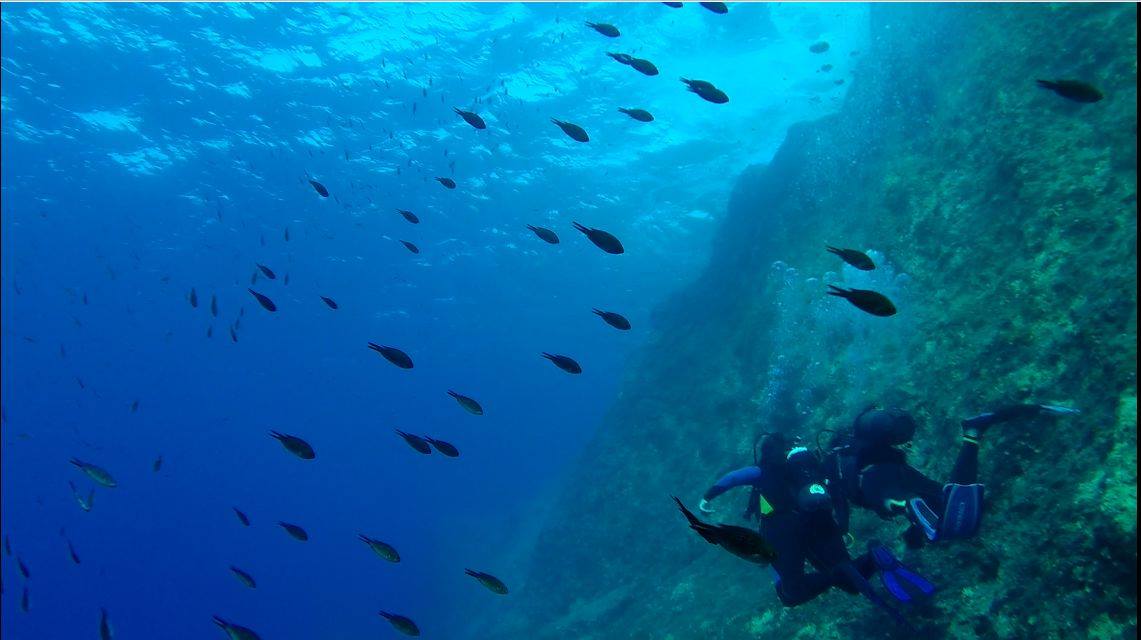How To Take Impressive Underwater Photos
Underwater photography offers many exhilarating and rarely-seen photo opportunities that no other form or photo-taking situation may present.
Even if you don’t wish to pursue searching for shipwrecks or caves and just feel like taking photos of a fish or two, the experience underwater photography provides can be an extremely exciting process and art in itself, and it’s proving to be just as distinct of a form of photography as portrait and street are from general photography.
But you can take very unique and breathtaking shots just by submerging yourself and your usual subjects underwater in a pool, as depicted above. Though a photo taken in water will lose some of its quality and sharpness, water can offer many opportunities for very different and unique aesthetics and photo effects that no amount of effort in post-production could quite achieve.
Certainly, though, if you’re interested in underwater photography, you probably would like to go into the sea or ocean eventually to photograph marine life and other rare underwater sights. The ocean’s salinity, pressure, and wetness place many physical requirements and components on a camera that unspecialized cameras just won’t have, and of course you can’t take an impressive photograph with a shoddy or improper camera. Most underwater cameras are completely sealed shut against water and dust to a depth of at least to thirty feet. Underwater cameras should also be weather-resistant to a wide range of temperatures, usually 10-100 degrees Fahrenheit, and also shockproof against drops of about five feet or more.
If you’re looking to go into colder waters, you should look for a camera that’s coldproof and / or freezeproof. Also, since visibility is going to be more of an issue while in the water, a larger screen will give you more area to work with and preview your images.
If budget is an issue and you’re looking to take professional photos with a DSLR camera and you already own such a camera, then a special housing case certainly is a working and much cheaper solution than buying a brand-new camera. Many waterproof housing cases fit on a wide range of camera bodies, and aren’t actually too clunky or bad-looking. Casual photographers who don’t wish to splurge on a DSLR camera, though, will find that the technology in underwater cameras can keep up nearly as well as regular digital cameras, and will be able to produce fairly satisfactory quality. For professional photographers though, DSLR quality is of course a must.
But you can take very unique and breathtaking shots just by submerging yourself and your usual subjects underwater in a pool, as depicted above. Though a photo taken in water will lose some of its quality and sharpness, water can offer many opportunities for very different and unique aesthetics and photo effects that no amount of effort in post-production could quite achieve.
Certainly, though, if you’re interested in underwater photography, you probably would like to go into the sea or ocean eventually to photograph marine life and other rare underwater sights. The ocean’s salinity, pressure, and wetness place many physical requirements and components on a camera that unspecialized cameras just won’t have, and of course you can’t take an impressive photograph with a shoddy or improper camera. Most underwater cameras are completely sealed shut against water and dust to a depth of at least to thirty feet. Underwater cameras should also be weather-resistant to a wide range of temperatures, usually 10-100 degrees Fahrenheit, and also shockproof against drops of about five feet or more.
If you’re looking to go into colder waters, you should look for a camera that’s coldproof and / or freezeproof. Also, since visibility is going to be more of an issue while in the water, a larger screen will give you more area to work with and preview your images.
If budget is an issue and you’re looking to take professional photos with a DSLR camera and you already own such a camera, then a special housing case certainly is a working and much cheaper solution than buying a brand-new camera. Many waterproof housing cases fit on a wide range of camera bodies, and aren’t actually too clunky or bad-looking. Casual photographers who don’t wish to splurge on a DSLR camera, though, will find that the technology in underwater cameras can keep up nearly as well as regular digital cameras, and will be able to produce fairly satisfactory quality. For professional photographers though, DSLR quality is of course a must.


